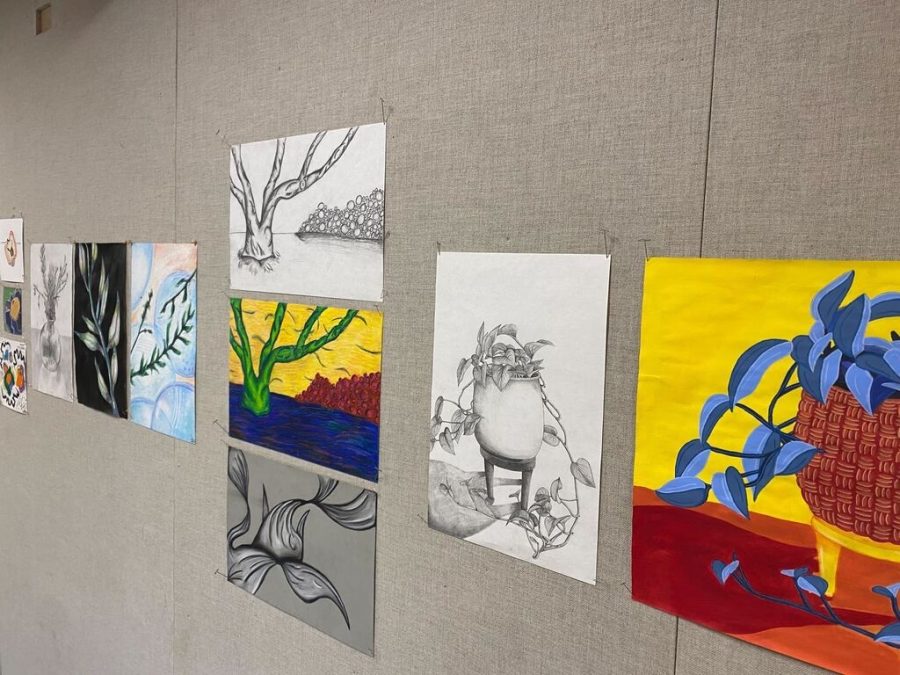New HAVPA course to be added for the 2022-23 school year
Student artwork hangs in the VA annex on the first floor. Photo by Brennan Eberwine.
March 24, 2022
The 2022-2023 school year will see a new History and Appreciation of Visual and Performing Arts (HAVPA) course to Manual’s repertoire. Currently, students are able to take AP Art History, Spanish Humanities, an online HAVPA course or a traditional HAVPA course to fulfill this graduation requirement. This new course, Hands-On Humanities, hopes to offer a completely different experience from not just current HAVPA courses, but all other courses currently taught at Manual.
Hands-On Humanities is the brainchild of Mr. Krause (Social Studies). It’s been in the works for around seven or eight years and has undergone many iterations, but he mainly credits his move from Center Hall to the VA annex for helping really get it off the ground. The idea started as “Hands-On History” before asked if he could turn it into a humanities course by incorporating more cultural elements. The course morphed into “Hands-On Humanities” with the help of VA teachers and further inspiration.
Krause hopes to, “really engage kids in a way that they’re typically not used to being engaged,” and believes that school should be preparing students for life beyond the classroom in multiple ways. Beyond understanding cultural society, he also emphasizes the value of learning hands-on skills such as wood carving, smelting and other industrial arts skills that are not typically seen at Manual.
“We’ll be using examples from all the different types of cultures that we’ll be studying from all around the world and even different time periods. So we’ll be investigating these societies through their cultural artifacts. And so we’ll be looking at artifacts through different museums from around the world,” Krause said.
After deep-diving into the culture of a society, the class would then look at how that culture manifests itself in an item. Why was that item made? Who made it? What was it made out of? What was the significance? Next, the class would recreate the artifact.
One specific example of a society and artifact Krause gave was of Roman jewelry. This would mean examining Roman culture and then seeing how that culture manifests in the jewelry they wore. Serpents were a rather significant symbol in Roman society and serpent jewelry was seen as good luck and used to ward off evil. After exploring these different aspects and gaining understanding, the class would proceed to recreate Roman jewelry.
Krause explained the class would, “make our own bronze, let’s make an outlay, let’s smelt metal, then let’s make a bracelet or a ring in wax and carve it, then put it into a form, and then cast and make that very thing that we studied.”
The artifacts will get more technical and mechanical, increasing in difficulty and building off skills previously learned as the year goes on. It would be a synergetic combination of hands-on learning, critical thinking and cultural analysis, satisfying and testing skills of both the brain and body.
Hands-On Humanities is an ambitious blend of technical hand work and intricate historical studies that is sure to make for an interesting class. Students may speak to their counselor to enroll for next year and it’s to be noted that seniors will get first priority.









